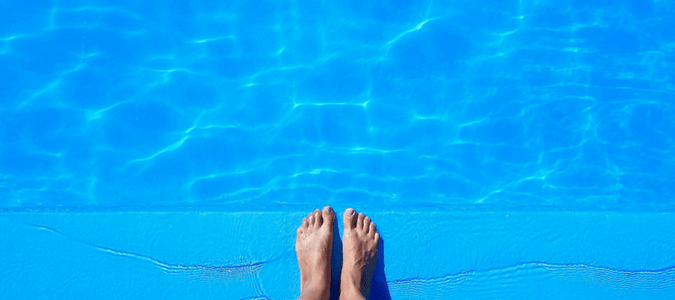
One of the best ways to beat the heat on a hot summer day is to go for a swim. If you have your pool, you know maintenance is no small task. The last thing you want as a pool owner is to discover that your pool water is green and cloudy instead of crystal clear.
Why is My Pool Green?
Keeping a pool looking clean and clear requires paying particular attention to the water chemistry. Let’s discuss the three primary factors in pool operation—physical, chemical, and biological—how they impact the color of your water and what to do if your pool water becomes cloudy and green.
Pool Filtration & Circulation
The most essential part of your pool’s operation is your filtration system, which is responsible for keeping your water clean. The filters in your pool should remove dirt and debris which make their way into your pool from the air or your bathers and can contribute to cloudy water. The three most common types of filters are cartridge filters, sand filters, and diatomaceous earth (DE) filters. Each type requires slightly different maintenance, although all benefit from frequent rinsing to remove accumulated debris.
In addition to ensuring your filters are working correctly, pool owners need to ensure that water is circulating through the pump and filter system. There are a few ways to keep water moving in your pool. First, check to see if the drain at the bottom of your pool is open so that at least one-third of the pool’s water flows through it. Second, direct your pool’s water flow in a circular pattern by changing the return line fittings. Finally, point these toward the bottom of the pool to help circulate water from the bottom to the top.
Sometimes, tiny particles in your pool pass the filter, and a buildup of these materials can make your water more cloudy. Adding a water clarifier will force the microparticles to bond together and be more easily captured by your filters. If your pool is highly cloudy, such as when you open it for spring, you may want to add a liquid flocculant (sometimes referred to as “floc”), which causes buildup to settle on your pool’s floor, where it can be easily vacuumed.
Over time, the accumulation of makeup products and body oils can compromise the performance of your pool sanitizer and lead to unattractive scum lines. When that happens, homeowners can apply enzyme digestive products specially formulated for pools to help break down materials so that the pool’s filtration system can handle them.
Swimming Pool Water Balance
Your pool contains some chemicals to keep the water clean, clear, and safe for swimming. The most common pool chemicals are water balancers, sanitizers, algaecides, oxidizers (more commonly known as “shocks”), and supportive pool chemicals. Part of maintaining a pool is ensuring that the levels of these additives stay within a set of parameters.
An imbalance of the chemicals in your pool can promote the growth of algae that will turn the pool green, but the pool water can also turn green because of a buildup of minerals. Discoloration resulting from mineral buildup tends to occur after chemicals are added to the pool. Algae growth is often the result of a lack of chemicals needed to keep the pool clean.
Biological Factors in Maintaining Clean Pool Water
Once you have taken steps to ensure that your water is filtered and circulating correctly and that the pool chemicals are balanced, you’ll want to ensure your water stays clean. The primary ways to make this happen are to practice proper sanitation, to perform shock oxidation treatments when necessary, and through algae control.
The most common pool sanitizers are chlorine and bromine. Both control the level of bacteria in your pool water. Shock oxidation helps prevent the buildup of bather waste, such as sweat, which can combine with chlorine to irritate bathers’ eyes and mucous membranes, compromise chlorine’s ability to disinfect your pool water, and lead to a strong odor.
After a storm or heavy rainfall, your pool may experience an influx of debris or organic material, leading to algae growth or combined chlorine. Administering a shock oxidation treatment after these significant weather events can help avoid these problems.
The easiest way to control algae is to prevent it in the first place. The most common types of algae found in pools are green algae, yellow (or mustard) algae, and black algae. Use an algaecide as part of your routine pool maintenance, which treats existing growth and discourages new growth.
Let ABC Be Your Expert on Pools
Are you still having trouble keeping your pool water looking clean and clear? Contact ABC swimming pool contractors to handle your pool cleaning, repairs, and routine maintenance. For decades, ABC has been making life easier for homeowners, whether by taking pool maintenance to avoid costly repairs, handling landscaping and lawn care needs, or even keeping your yard mosquito-free. Rely with the experts at ABC so you can enjoy your outdoor spaces.